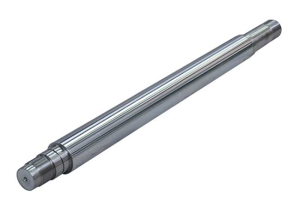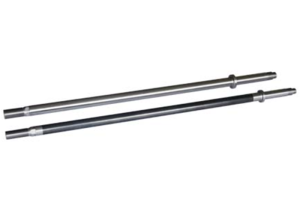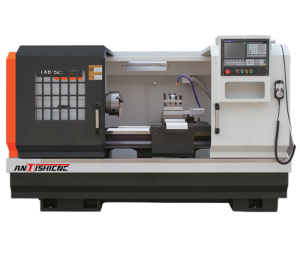ANTISHICNC CNC Turning Milling Machines,CNC Lathes
ANTISHICNC CNC Turning Milling Machines,CNC Lathes
Piston tube usually refers to the tubular parts that move around the piston in the hydraulic system or pneumatic system, which is an important part of the piston cylinder. It is usually processed by CNC lathe, which can accurately control the size of the piston rod, and through precise programming, it can control the dimensional accuracy of the piston rod’s outer diameter, length and other dimensions within a very small tolerance, and also has a high degree of automation with a high degree of automation. Once the program is written and entered into the machine control system, automatic machining can be realized. The operator only needs to carry out simple clamping, tool change and other operations, greatly reducing the time of manual intervention. Moreover, the CNC lathe can work continuously and can run stably for a long time except for the necessary tool change and equipment maintenance, thus improving productivity. The machining steps are as follows:
 |
 |
First of all, material preparation and inspection
According to the design requirements of the piston rod and the use of the environment, choose the appropriate material, such as high-quality carbon steel, alloy steel and so on. The material should have good strength, toughness and wear resistance. Before processing, the material is inspected, including the hardness of the material, metallurgical organization, dimensional specifications, etc., to ensure that the quality of the material meets the requirements.
Clamping and centering
Clamping: Clamp the piston rod blank on the chuck of the CNC lathe. For piston rods with large length and diameter, in order to prevent vibration and deformation during processing, in addition to chuck clamping, it is also necessary to use the tailstock top for auxiliary support. Clamping to ensure that the axis of the blank and the lathe spindle axis coincide, clamping force should be moderate, to avoid damage to the surface of the blank.
Alignment: use the percentage table and other tools to align the blank, so that the blank’s external runout is controlled within a small range, generally require a runout of no more than 0.05mm, in order to ensure that the subsequent machining of the coaxiality requirements.
Tool selection and installation
According to the machining process requirements of the piston rod, select the appropriate tool. Including external rough turning tool, external fine turning tool, grooving tool, thread turning tool and so on. The material of the tool should be selected according to the material hardness of the piston rod, such as carbide tools are suitable for processing higher hardness materials. Tool installation, to ensure that the tip of the tool and the lathe spindle center of the same height, the tool’s outstretched length should be appropriate, the general cylindrical lathe tool outstretched length of not more than 1.5 times the height of the tool shank, and to ensure that the tool is installed firmly, to avoid the loosening of the machining process.
Rough machining of outer diameter
According to the size of the outer diameter of the piston rod and the margin, prepare the CNC program for rough turning. Set the appropriate cutting parameters, such as cutting speed is generally 60 – 120m/min, feed 0.2 – 0.4mm / r, cutting depth of 1 – 3mm. rough turning is to quickly remove most of the allowance, so that the piston rod outside the round dimensions close to the final size, and at the same time for the finish machining of the allowance of 0.5 – 1mm. In the rough turning process, we should pay attention to the shape and color of the chips to determine whether the cutting condition is normal, if abnormal, we should adjust the cutting parameters in a timely manner.
Cylindrical Precision Turning
Replace the cylindrical fine-turning tool, the edge of the fine-turning tool should be sharper and more accurate. Through the fine-turning machining, the outer diameter of piston rod is machined to the design requirements, to ensure that the tolerance of the outer diameter is within the range of ±0.02 – ±0.05mm, the error of cylindricity is not more than 0.005mm, and the surface roughness Ra reaches 0.8 – 1.6 μm During the fine-turning process, the feed system of the lathe should be kept stable to ensure the machining accuracy.
Thread machining (if required)
If the end of the piston rod has a threaded structure, thread machining is required. Select a suitable thread turning tool and prepare a thread machining program according to the specification of the thread (such as pitch, tooth type, etc.).
Finally, use measuring tools to measure the outer diameter and length of the piston rod, and compare the test results with the requirements of the design drawings. For the part of the size exceeds the difference, analyze the reasons, such as CNC program error, tool wear, cutting parameters are unreasonable, etc., and take corresponding corrective measures.
According to the common size of piston rods in the market, you can choose our company’s flat bed CNC lathe CK6152/1000, model reference as follows:
| Item | Specifications | |
| CK6152E/1000 | ||
| Max.swing diameter over bed | mm | Φ530 |
| X axis travel | mm | 300 |
| Z axis travel | mm | 1000 |
| Swing over cross slide | mm | Φ280 |
| Distance between centers | mm | 1000 |
| Max working diameter(Disc) | mm | 520 |
| Maximum turning length | mm | 825 |

To learn more about CNC Lathe, please visit.
https://www.antishicnclathe.com/horizontal-lathe/
Or email us at: cnc@antishicnc.com
Our engineers will work with you to match the most suitable solution for you.